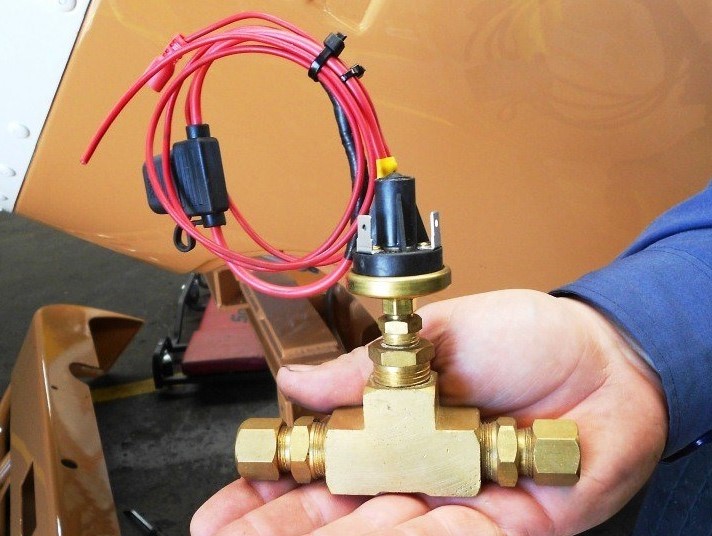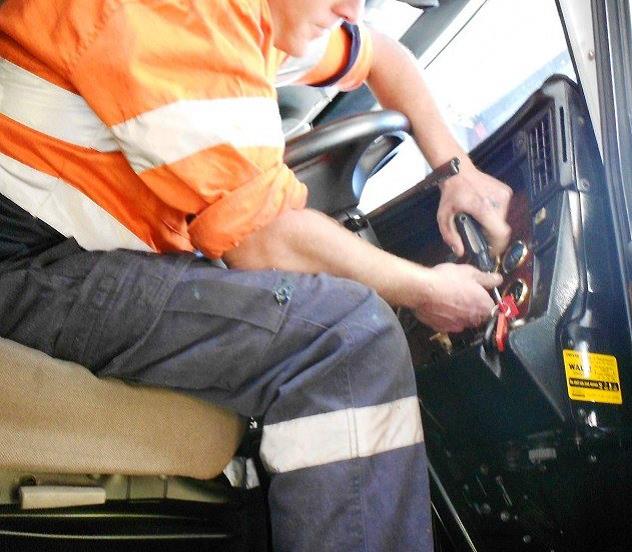Russell Transport case study: Retrofitting a hand-brake alarm
What was the problem
Queensland Company, Russell Transport has been in operation for over 90 years. Over this time, the company had been concerned by an increasing trend in the number of near miss events and even deaths occurring within the heavy vehicle industry as a result of drivers and/or mechanics failing to apply the handbrake of the vehicle while there was no driver positioned in the driver's seat.
The company sought to address this alarming trend by adopting a proactive approach to instil behaviours within their own workforce, to remind drivers to apply the handbrake – regardless of the terrain – before they exit the driver's seat.
What was done
Russell Transport embarked on an initiative to retro-fit their all of their 97 heavy vehicles with hand brake alarm systems.
Their workshop installed handbrake alarm systems that sounds the horn whenever a vehicle's door is opened without the handbrake being applied.
The cost per vehicle was $200.00 including labour which took about around 1.5hrs to install.
The equipment used to retro-fit the handbrake alarm consisted of a Hobbs Switch (electric air fitting) Airline T piece.
The handbrake alarm system is a design control installed by a qualified mechanic, who accessed the park brake switch via the dashboard. In most vehicle models the parts are linked to the door light striker switch which creates the trigger for alarm.
Russell's found that the horn is an effective (built in) sound device that grabs not only the driver's attention but also the attention of people in the vicinity of the vehicle.
Even though the workshop and drivers initial response was mixed, the warning system is still being effectively used in the business after its introduction 5 years ago.
 |  |
| Figure 1: The equipment used for the handbrake alarm was retro-fitted, which consisted of a hobbs switch (electric air fitting) and airline t-piece. | Figure 2: In most vehicle models the parts are linked to the door light striker switch which creates the trigger for alarm. |
What were the benefits
Russell's has indicated that there are clear behavioural benefits by having a high volume alert system active. “It is very hard to ignore the sound of a horn blasting, it prompts you to take action” says Julie Russell, Director. The purpose is to remind drivers that they need to apply their handbrake before they get out of the vehicle. “It is a trigger, or prompter for the driver to respond and take action” says Julie Russell, Director. It will only trigger when the door opens and the hand brake is not engaged.
The other side to consider is, when the vehicle is in the workshop for servicing or repair, the mechanics will trigger the alarm if they are conducting work requiring the handbrake to be released. It is advised that maintenance systems are in place, such as a maintenance checklist, which require that mechanics check the hand brake alarm has been reactivated if there is a need to turn it off. Plus, in some instances an alternative method of securing the vehicle should be used, such as wheel chocks, and the handbrake released only for the minimal time required.
The alarm serves to influence not only driver behaviour, but also mechanics or repairers when undertaking vehicle maintenance, servicing or repairs.
Please note: before making any modifications to your vehicle, the component person conducting any changes should consult with the manufacturer of the vehicle first.